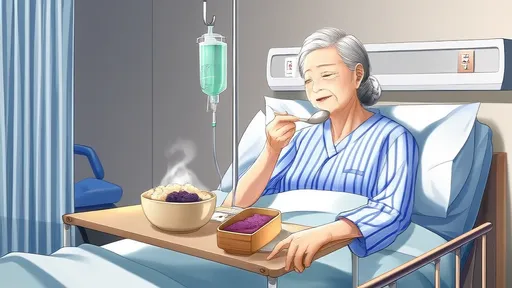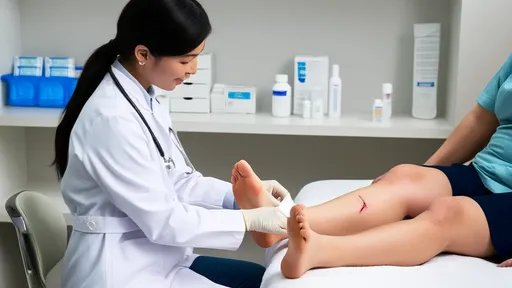For individuals living with diabetes, wound care is not just a minor health concern—it’s a critical aspect of managing their condition. Diabetes can impair the body’s natural healing processes, making even small cuts or blisters potential gateways to serious complications. Understanding how to properly care for wounds is essential for preventing infections, promoting faster healing, and avoiding severe outcomes like amputations.
The Unique Challenges of Diabetic Wounds
Diabetes affects wound healing in several ways. High blood sugar levels can damage nerves, leading to neuropathy, which reduces sensation in the extremities. This means a person might not notice a small cut or blister until it becomes a more significant problem. Additionally, poor circulation—common in diabetes—limits the flow of oxygen and nutrients to the wound, slowing down the healing process. The immune system may also be compromised, increasing the risk of infections.
Even minor wounds can escalate quickly if not treated properly. What might be a simple scrape for someone without diabetes could develop into a chronic ulcer for a person with poorly controlled blood sugar. This is why proactive wound management is non-negotiable for diabetics.
Immediate Steps for Wound Care
When a wound occurs, the first step is to remain calm but act swiftly. Clean the area gently with mild soap and lukewarm water to remove debris and bacteria. Avoid harsh antiseptics like hydrogen peroxide or alcohol, as these can damage delicate tissue and delay healing. Pat the area dry with a clean towel, ensuring no moisture remains, as damp environments encourage bacterial growth.
Applying an appropriate dressing is the next critical step. For minor cuts, a sterile adhesive bandage may suffice, but deeper or larger wounds might require hydrogel or hydrocolloid dressings to maintain moisture balance. It’s important to change dressings regularly, especially if they become wet or dirty. Keeping the wound covered protects it from external contaminants and provides a conducive environment for healing.
The Role of Blood Sugar Control in Healing
One of the most overlooked aspects of wound care in diabetics is the role of blood sugar management. Elevated glucose levels create an ideal environment for bacteria to thrive while impairing the function of white blood cells. Consistently high blood sugar can also lead to inflammation, further hindering recovery.
Maintaining blood sugar within target ranges isn’t just about long-term health—it directly impacts how well and how quickly wounds heal. Regular monitoring, adherence to prescribed medications, and a balanced diet low in processed sugars can make a significant difference in recovery times. Healthcare providers often emphasize that wound care and glycemic control go hand in hand.
Recognizing Signs of Trouble
Not all wounds heal smoothly, and diabetics must be vigilant for warning signs of complications. Increased pain, redness, swelling, or warmth around the wound could indicate an infection. Pus or an unpleasant odor is another red flag. Systemic symptoms like fever or chills suggest the infection may be spreading and require immediate medical attention.
Another concern is the development of gangrene, where tissue dies due to lack of blood flow. This condition is a medical emergency and often necessitates surgical intervention. Early detection and treatment are crucial to prevent severe outcomes, which is why regular self-examinations—especially of the feet—are strongly recommended.
When to Seek Professional Help
While minor wounds can often be managed at home, certain situations demand professional care. If a wound doesn’t show signs of improvement within a few days, becomes deeper, or shows any signs of infection, consulting a healthcare provider is essential. Diabetics with foot ulcers should seek specialized care from a podiatrist or wound care clinic, as these professionals have expertise in managing diabetes-related complications.
In some cases, advanced treatments like debridement (removal of dead tissue), antibiotic therapy, or even hyperbaric oxygen therapy may be necessary. These interventions can significantly improve healing outcomes but are typically reserved for more severe cases. The key takeaway is not to delay seeking help when needed.
Prevention: The Best Strategy
Preventing wounds is always better than treating them. For diabetics, this means adopting daily habits that minimize the risk of injury. Wearing well-fitted, comfortable shoes can prevent blisters and calluses. Inspecting feet daily for cuts, cracks, or sores—especially between the toes—helps catch problems early. Moisturizing dry skin reduces the likelihood of cracks, but avoid applying lotion between toes where excess moisture can lead to fungal infections.
Regular exercise improves circulation, which is beneficial for overall wound prevention. However, it’s important to choose activities that don’t put excessive pressure on the feet. Swimming or cycling may be better options than running for those with neuropathy or existing foot issues.
The Emotional Toll of Chronic Wounds
Living with chronic wounds can take a significant emotional toll. The constant worry about infections, the pain of slow-healing injuries, and the fear of severe complications like amputations can lead to anxiety and depression. Support groups, either in-person or online, can provide a sense of community and shared understanding. Mental health professionals can also offer strategies for coping with the stress of managing a chronic condition.
Family members and caregivers play a vital role in providing emotional support. Simple acts like assisting with wound dressings or offering encouragement can make a world of difference. Acknowledging the psychological impact of diabetic wounds is just as important as addressing the physical aspects.
Looking Ahead: Advances in Wound Care
Research in diabetic wound care is continuously evolving, offering hope for better treatments. Innovations like smart bandages that monitor healing progress and release medications as needed are on the horizon. Stem cell therapy and growth factor treatments are also being explored to accelerate tissue repair.
For now, the best approach remains a combination of vigilant self-care, proper medical management, and staying informed about new developments. By taking proactive steps and working closely with healthcare providers, individuals with diabetes can significantly reduce the risks associated with wounds and maintain a better quality of life.

By /Aug 7, 2025

By /Aug 6, 2025

By /Aug 6, 2025

By /Aug 6, 2025

By /Aug 6, 2025

By /Aug 6, 2025

By /Aug 6, 2025

By /Aug 6, 2025

By /Aug 6, 2025

By /Aug 6, 2025

By /Aug 6, 2025

By /Aug 6, 2025

By /Aug 6, 2025

By /Aug 6, 2025

By /Aug 6, 2025

By /Aug 6, 2025

By /Aug 6, 2025

By /Aug 6, 2025

By /Aug 6, 2025

By /Aug 6, 2025